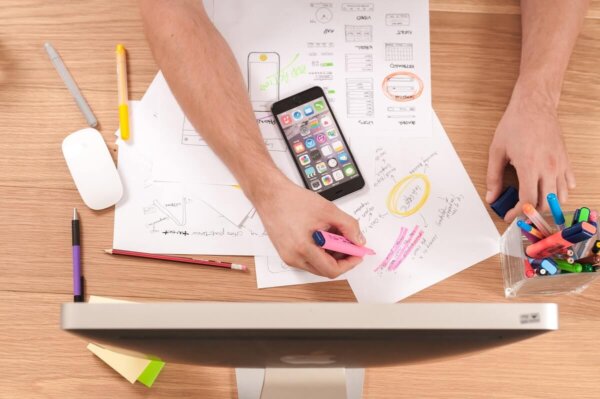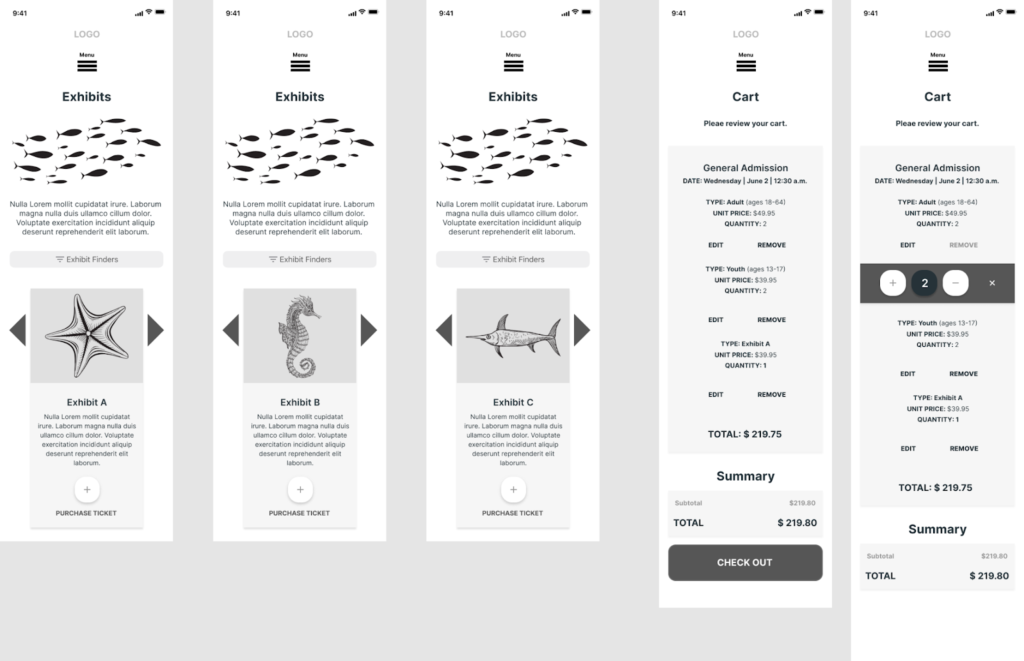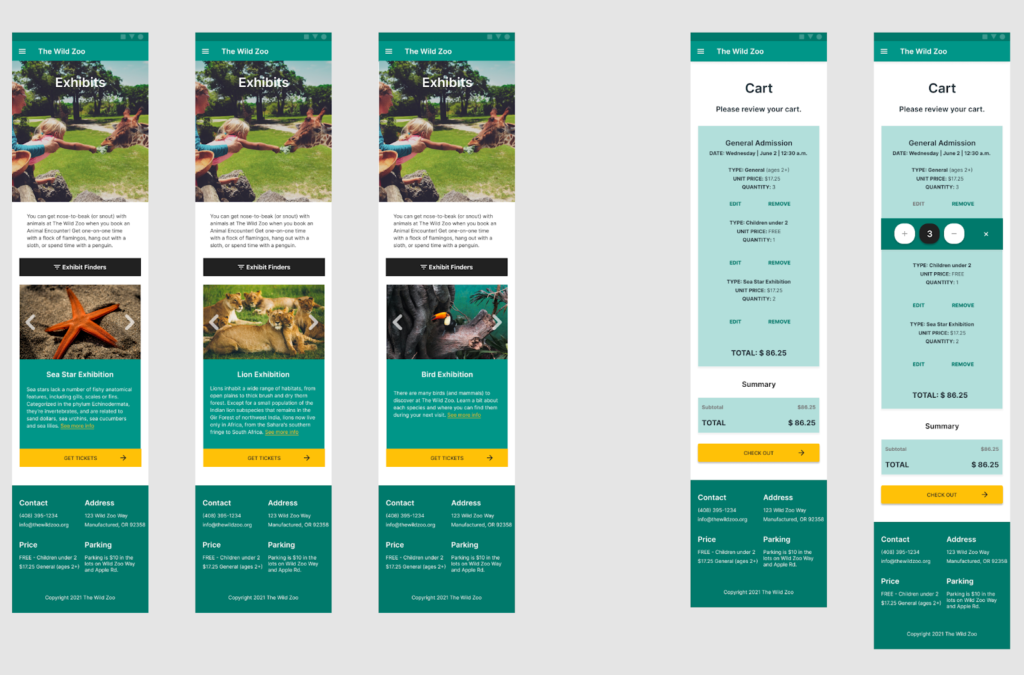
5 Tips To Boost Creativity From An Ecommerce UX Designer
Learn how to boost creativity, unleash confidence, and become a better designer or ecommerce manager.
At the gym, you don’t assume that on your first day working out you will be lifting your goal weights or running faster than you ever have before.
So why do we assume that in creative work, we will immediately have the best idea or deliver unbelievable results?
Ask a room full of business people how many see themselves as creative and you are likely to receive some blank stares or commentary about how bad they are at drawing.
As an ecommerce UX designer, this perspective is damaging. But still, I sometimes find myself getting caught up in the idea that you either have creativity or you don’t.
The reality is, it’s a muscle you have to exercise and strengthen just like any other.
I recently read Creative Confidence by IDEO founders Tom and David Kelley which outlined how to help companies and individuals boost creativity in their work. The book is broken down into eight chapters, including a section with exercises designed to get people out of their comfort zones and into a space of innovation.
Below are my five biggest takeaways from the book for aspiring ecommerce UX designers, and insights on how we live out these ideas and boost creativity in our own work at The Good.
1. Apply a Growth Mindset to Your Work
How many times have you been given a problem and thought or said “I can’t” or “this won’t work”?
This is a fixed mindset or the belief that intelligence or creativity are immutable characteristics that cannot be changed.
This mindset limits us and makes us so afraid of failure or embarrassment that we avoid risks and end up sabotaging long-term opportunities simply because we are afraid to admit what we don’t know.
Conversely, a growth mindset is when you believe creativity and knowledge are like a muscle that must be trained over time with persistence. It gives us the chance to improve in small, incremental ways that add up big over time.
We encourage a growth mindset amongst our clients and our team by living out our core value of “Make Improvements Not Excuses.” We are a team of lifelong learners who understand the value of growth through practice, not perfection.
A fixed mindset tells us that receiving critical feedback means you are not measuring up or have personally failed. However, a growth mindset allows us to take feedback as an opportunity to improve our work and grow in our discipline.
2. Early Failure is a Key to Long-Term Success
David and Tom Kelley write about failure a lot in Creative Confidence as something to embrace rather than avoid.
Early failure in a project helps us find weaknesses and correct them in the innovation cycle. Owning a setback allows us to actually learn what to do differently in the future.
Psychologist Albert Bandura discusses this in his work around curing phobias: giving people small successes to focus on can help them overcome limiting beliefs and build creative confidence.
An easy way to learn “quick, easy, and cheap” is through prototyping. Prototypes can be as rudimentary as a drawing on a napkin and as high fidelity as an interactive digital mockup.
They give us the latitude to quickly test ideas to understand the best pathway forward.
Here’s an example of a low fidelity mockup of a zoo app that I created in a course. Taking this first step gave me and my peers a starting point to work off of.

As we continued working on the prototype, we found weak points and areas for improvement that led us to the more polished version. Below you can see the high fidelity mockup of the same zoo app once we iterated on it as a team.

While the first version was far from perfect, it gave us ideas on how to improve and helped guide us to our final product.
When you approach challenges this way, failure is no longer a scary word but a part of the innovation process.
At The Good, we take it one step further when designing multivariate tests for our clients. A failed test does not garner blame or frustration but is labeled a “learner” or an opportunity to iterate and improve an experience for the future.
Enjoying this article?
Subscribe to our newsletter, Good Question, to get insights like this sent straight to your inbox every week.
3. Be an Empathetic Detective
At the heart of all the work we do as creative professionals is the end-user.
Cultivating curiosity and empathy for your users is the best way to create better experiences for them and in turn, helps us boost creativity.
It is all too easy to fall back on what we already know, especially with time constraints and budgets to consider. So how do we conduct research in a way that helps us develop valuable insights?
Below are a few strategies:
- Apply a beginner’s mind to everyday tasks, what do you notice that you normally would not?
- Instead of simply looking at what competitors are doing, cultivate empathy for your users and what their perspectives and needs are.
- Look for ways to update and refresh your worldview. Field observations help you notice details that you wouldn’t otherwise pick up in structured interviews.
- Ask why, then keep asking why. Are you gaining new insights from user interviews or just hearing what you expect?
- Use customer journey mapping to get in the mindset of your users. Look for insights, patterns, and anything that can be improved. This is such a critical strategy behind how to boost creativity and build a better experience for customers, that our team created an informative video on the subject.
4. Collaboration is Key
The fact is, creativity does not happen in a vacuum. It requires input from all the disciplines contributing to a project or goal.
Multidisciplinary teams keep our perspective fresh and create a system where sharing ideas is encouraged.
Teams that have creative confidence are ones that have a back and forth culture where team members ask “what can I do to improve this concept” rather than “that won’t work” or “that is a bad idea.” They share ownership of a project because that gives everyone a stake in successes and failures.
A great way to foster this creative collaboration is to designate a time for open discussion and ideation. We have weekly and monthly meetings dedicated to internal reviews of our work and brainstorms. Anyone on the team can attend and anyone can bring a topic to cover. These meetings create a culture of internal feedback and collaboration.
David and Tom Kelley recommend thinking of each team member as a superhero. What are their strengths? What is their kryptonite (weaknesses)? How can you best draw on strengths and diminish weaknesses during a project lifecycle?
Great teams are diverse. They are not afraid of uncomfortable conversations and are prepared to bring their whole selves to work which allows us to understand their unique perspective.
5. Just Do It
Not just Nike’s famed catchphrase, the principle of “just do it” applies to building creative confidence and boosting creativity as well.
“If you want to make something great, you have to start making.”
In the workplace, this can be challenging especially when faced with a problem that has no clear solution. Instead of being a passive observer, tackle a doable piece of the problem.
Get started, even if your start feels inconsequential. Prototyping comes into play here as a low-stakes way to get ideas flowing and engage the team/clients in the story you are trying to convey.
Test your prototypes with users, get feedback, and iterate.
If you are a procrastinator, try reframing. Replace ‘procrastinate’ with the word ‘resistance’ and you may realize that the gap between thinking and action is something you can bridge.
Leverage Your Inner “Ecommerce UX Designer” To Boost Creativity
Creativity is something that must be worked and stretched to become a practice that feels comfortable, like any muscle.
Design thinking should not be siloed between our work and personal lives. In fact, design thinking pervades every aspect of our lives.
In our work at The Good we use a human-centered approach to solve challenges. Working as a team helps us keep ideas flowing and provides fresh perspectives.
We set goals and find ways to go beyond what we even thought was possible.
We see problems and take action to solve them.
Don’t let fear of failure and the thought that you are “not creative” limit you from what you can achieve. We can all benefit from design thinking and applying the key principles of creative confidence to our lives.
Enjoying this article?
Subscribe to our newsletter, Good Question, to get insights like this sent straight to your inbox every week.

About the Author
Sumita Paulson
Sumita is a Strategist at The Good with a decade of experience as a front-end developer. She works to create meaningful digital experiences and solve the everyday problems that make up our interactions with technology.